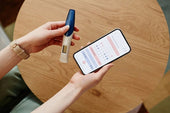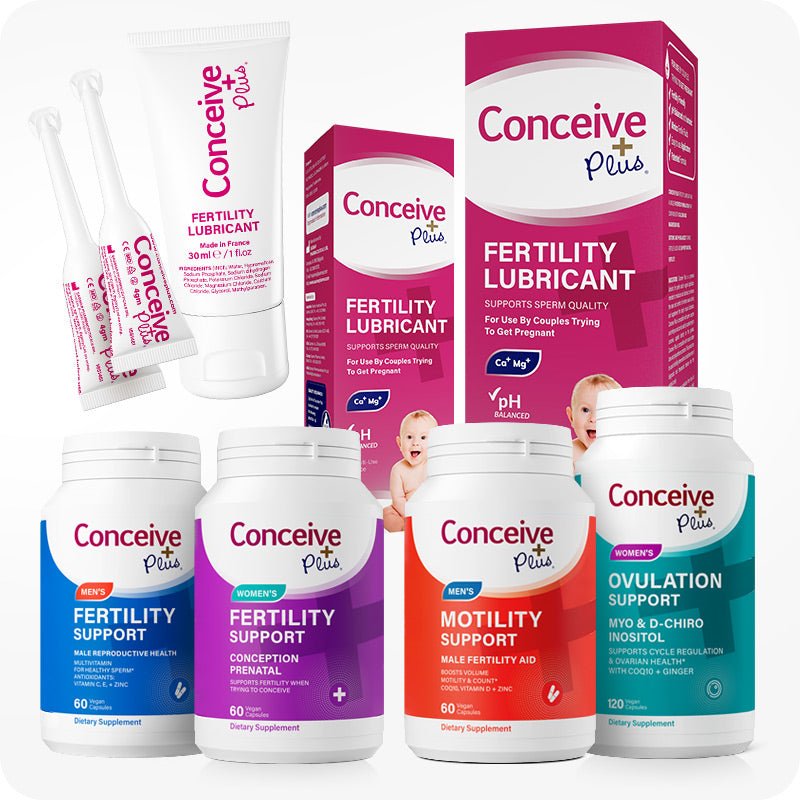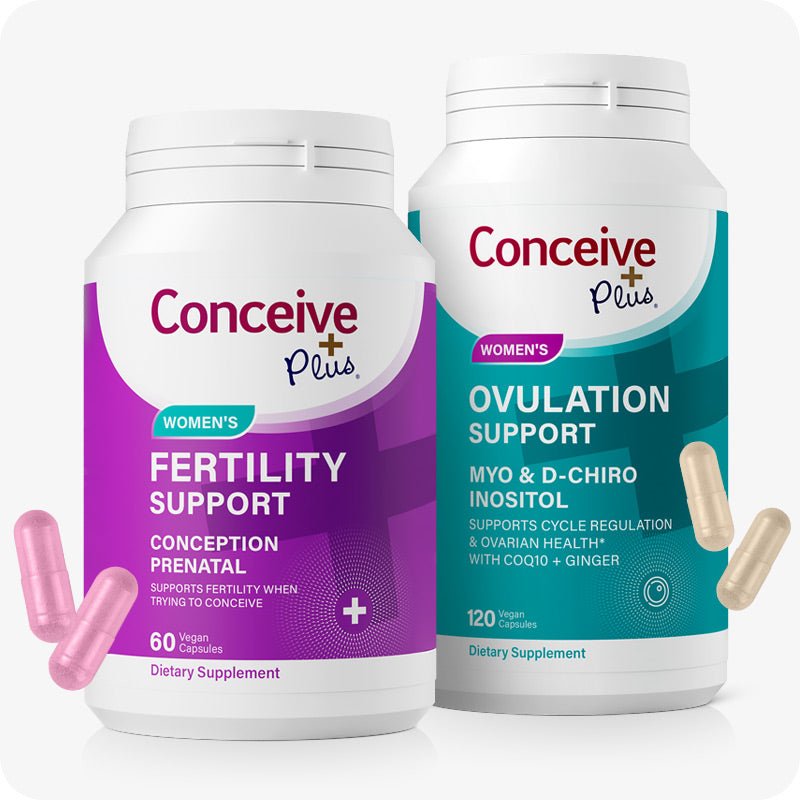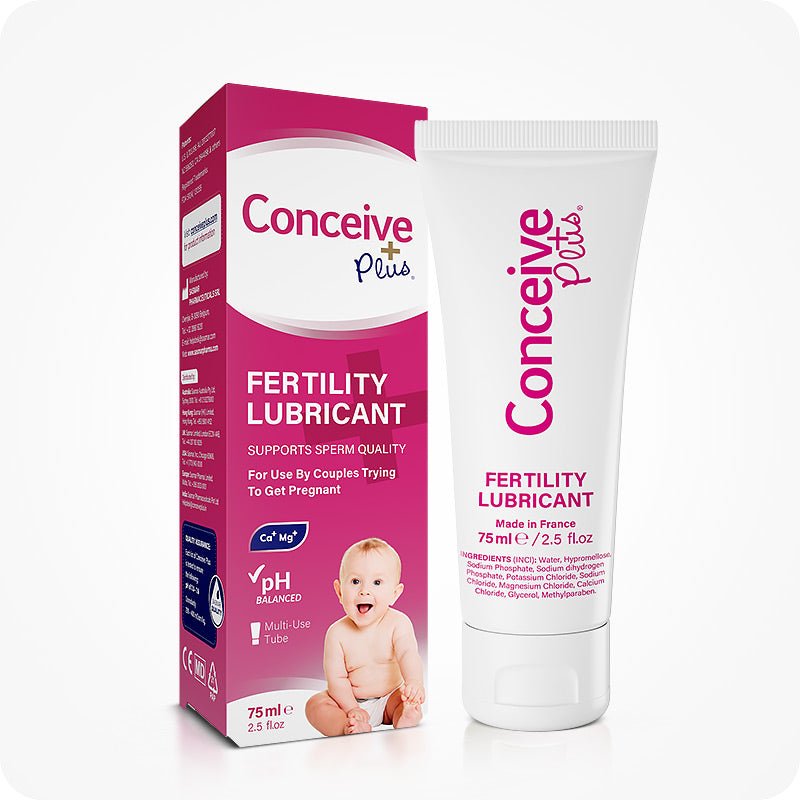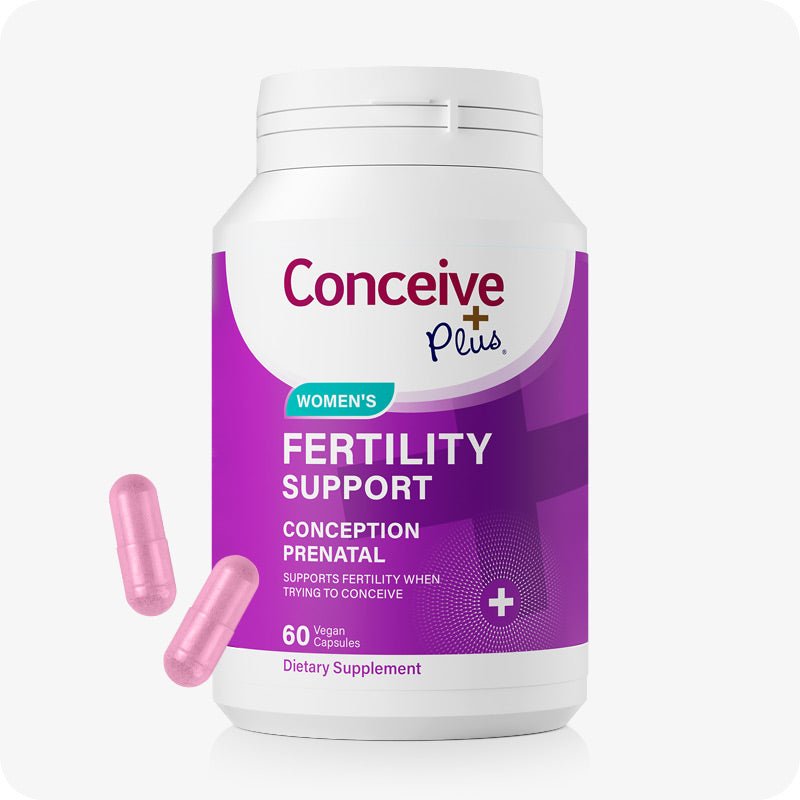When Does Ovulation Occurs in a 32 Day Menstrual Cycle?
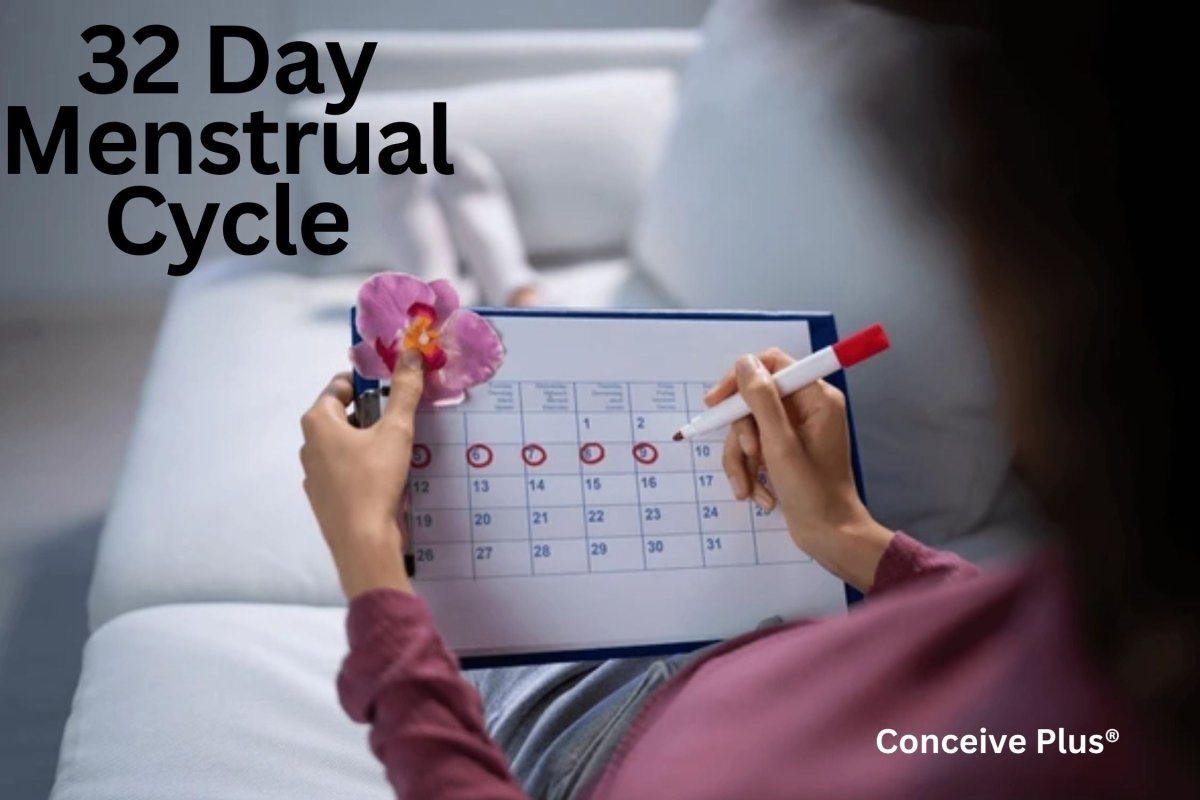
The menstrual cycle is an important part of a woman’s reproductive life. It is a natural process that prepares the female body for pregnancy. The cycle is filled with several key events, such as menstruation, ovulation, and the hormonal changes that support each stage of reproduction [1].
While many people think of the menstrual cycle as lasting 28 days, it is important to know that not every woman experiences the same length of cycle. Some women have cycles that are shorter than 28 days, while others may experience a 32 day menstrual cycle [2].
In this article, we will explore what happens during an average 28-day menstrual cycle and look at other cycle lengths, such as 24, 26, 32, and 34 days. The article will help you precisely predict the dates for important events of your cycle, like periods and ovulation.
The Average Menstrual Cycle
A lot of information about the menstrual cycle is based on the “average” 28-day cycle. Even though every woman is different based on her genetics and external factors, the 28-day cycle is often used as a model to explain the changes that happen in the body.
Image Source: https://www.conceptionadvice.com/menstrual-cycle-calendar-phases/
Here are the four major phases of the female menstrual cycle and their duration according to a 28-day cycle:
Menstrual Phase (Periods)
The menstrual phase is the start of the cycle and lasts about 4 to 7 days. This is when the body sheds the thickened lining of the uterus, causing strong abdominal cramps and menstrual bleeding.
The menstrual period is the time when the body resets and clears out the tissue from the previous cycle. Symptoms of menstruation that most women experience include cramps, fatigue, and mood changes. Methods to relieve discomfort during this phase include keeping yourself warm, resting, and using a heating pad.
Follicular Phase (Egg Maturation)
The follicular phase starts alongside the menstrual phase. It overlaps with the menstrual phase but lasts a bit longer, usually from day 1 to day 13 in a 28-day cycle.
During this phase, the pituitary gland in the brain releases the follicle-stimulating hormone (FSH) that signals the ovaries to start maturing several follicles [3]. Each of the follicles contains an immature egg that starts to mature under the influence of FSH.
Only one of many follicles will become dominant and continue to develop for ovulation. Women might notice increased energy levels and a more positive mood as this phase progresses.
Ovulation Phase (Egg Release)
Ovulation is one of the most important events in the menstrual cycle, especially for those planning conception. It typically happens around day 14 in a 28-day cycle [4]. During ovulation, the dominant follicle releases a mature egg into the fallopian tube, where it can meet sperm for fertilization.
Since a female egg is short-lived, ovulation is the time when a female is most fertile. If your goal is to get pregnant, you should try unprotected sex during this time [5]. Some women feel mild pain as a sign of ovulation, while others might not feel any such sign at all.
Luteal Phase (Uterus Preparation)
After ovulation, the cycle enters the luteal phase, which lasts from about day 15 to day 28. During this phase, the empty follicle turns into a structure called the corpus luteum.
This structure is responsible for progesterone production and release, a hormone essential for preparing the uterus for a potential pregnancy. If fertilization occurs, these hormones support the early stages of pregnancy.
If not, the corpus luteum disintegrates, progesterone levels drop, and the cycle begins again with the menstrual phase. Some women experience symptoms like breast tenderness or mood swings during this phase, often referred to as premenstrual syndrome (PMS) symptoms [6].
Timeline of Events in a 24 Day Menstrual Cycle
A 24-day cycle is a bit shorter than the typical 28-day cycle, which means all the phases happen a little faster. If you experience a 24-day cycle, your fertile window and ovulation occur earlier. Understanding these shifts can help you keep track of your cycle and plan intercourse accordingly, whether you plan to avoid pregnancy or achieve it.
- Periods: Your cycle starts with your period on day 1. In a 24-day cycle, the period usually lasts about 4 days, during which the uterine lining sheds completely. This is a normal process that signals the start of your cycle and helps clear the uterine lining for the next try.
- Follicular Phase: After your period, your body quickly moves into the egg maturation phase or late follicular phase. Between days 5 and 9, your ovaries work on developing the eggs in the follicles. The overall duration of the follicular phase is shorter in a 24-day cycle, but it usually doesn't affect the maturation of the egg.
- Ovulation: In a 24-day cycle, ovulation typically happens around day 10 [7]. This is when a mature egg is released from the ovary into the fallopian tube. Since ovulation is the peak fertility time, 24 day menstrual cycle getting pregnant is possible if you plan intercourse around day 10 of your cycle.
- Luteal Phase: The luteal phase begins at about day 11 and continues until the cycle resets at day 24. During this time, the body produces hormones like estrogen and progesterone to prepare the uterus for potential pregnancy. If fertilization doesn't occur, hormone levels will eventually drop, leading to the start of a new cycle.
If you've noticed your cycle becoming shorter and want to understand the potential reasons behind this change, be sure to check out our article "Why Is My Menstrual Cycle Getting Shorter? Experiencing a Shift in Rhythm" for further insights.
Timeline of Events in a 26 Day Menstrual Cycle
You may notice only a slight variation in a 26 day cycle from an average 28-day cycle. In this cycle, the phases are much the same, but the timing is adjusted ever so slightly. Women with a 26 day cycle might find that they have a bit more time during the follicular phase, leading to subtle differences in when ovulation occurs.
- Periods: Period 27 day cycle or 26 day cycle typically lasts between 4 and 7 days. This phase is when your body sheds the lining of the uterus, marking the start of the new cycle.
- Egg Maturation: After the menstruation phase or periods, your body enters the egg maturation phase. From day 5 to around day 11, your ovaries nurture the eggs for ovulation. This period ensures that the egg is fully ready for the next step in the cycle.
- Ovulation: In a 26-day cycle, ovulation is expected around day 12 [7]. This is when the mature egg is released, making this the peak of your fertility window. It’s the time when your chances of pregnancy are highest if sperm is available for fertilization.
- Luteal Phase: After ovulation, the luteal phase begins and continues until the end of your cycle at day 26. During this phase, your body creates a supportive environment through hormones that could support the possible pregnancy. If the egg isn’t fertilized, the hormone levels will decline, and the cycle will start over 26 days after the first day of the period.
If you're eager to optimize your fertility and learn more about strategies for a 26 day menstrual cycle getting pregnant, be sure to check out our guide "26 Day Menstrual Cycle Getting Pregnant: Navigating The Pregnancy Journey.
Timeline of Events in a 32 Day Menstrual Cycle
A 32-day cycle is longer than average, mainly because it extends the pre-ovulation or follicular phase. This means women with a 32 day or 31 day menstrual cycle experience a longer egg maturation time.
- Periods: Menstruation cycle 31 days or in cycle of 32 days usually last about 4 to 7 days, much like in other cycles.
- Egg Maturation: After your period, the body takes more time to prepare the egg compared to an average 28-day cycle, extending the egg maturation phase until around day 17. This extra time allows the follicles in your ovaries to mature fully.
- Ovulation: Ovulation in a 32-day cycle typically occurs around day 18 [7]. This is when a mature egg is released into the fallopian tube, marking your most fertile days. If your goal is to conceive, planning intercourse around day 18 will increase your chances of success.
- Luteal Phase: After the egg release, the luteal phase begins, lasting from day 19 until the cycle ends on day 32. During this phase, your body prepares for a potential pregnancy by producing supportive hormones. If pregnancy doesn’t happen, the hormone levels will drop like in other cycles, and a 32-day cycle will restart.
Timeline of Events in a 34 Day Menstrual Cycle
A 34 day cycle represents one of the longer menstrual cycle variations. In this cycle, each phase is naturally extended, and the events occur a bit later than in shorter or average cycles.
- Period: Your cycle begins with your period on day 1, which generally lasts about 4 to 7 days. Like any other cycle, the old uterine lining is shed during this time, clearing the way for the other events of the cycle.
- Egg Maturation: After the period, your body takes an extended time to prepare the egg, with this phase lasting until around day 19. The longer pre-ovulation phase gives your follicles ample time to develop fully.
- Ovulation: Ovulation in a 34 day cycle usually happens around day 20 [7]. This means you are peak fertile around the 20th day in a 34-day cycle. This highlights the importance of tracking cycles for accurate estimation of events like ovulation.
- Luteal Phase: After ovulation, the luteal phase begins, lasting from day 21 until the cycle resets at day 34. During this period, your body increases hormone production to support a potential pregnancy. If fertilization does not occur, hormone levels decline, signaling that it’s time for the start of a new cycle.
Tips to Improve Menstrual Regularity
If your cycle feels all over the place sometimes, don’t worry — many women go through irregular periods. The good news is, there are simple things you can do to support a more regular, balanced menstrual cycle. Here are some helpful tips:
- Get a Balanced Diet: Try to include more whole foods like leafy greens, nuts, seeds, fruits, and healthy fats. These can support your hormones and overall cycle health. Cutting back on too much sugar and processed foods can help too.
- Consider Fertility Supplements: A balanced diet may not be enough to obtain all the essential nutrients for supporting reproductive health and improving menstrual regularity. This is why experts recommend taking female fertility supplements that offer fertility-friendly nutrients like vitamin D, vitamin C, B vitamins, folate, iron, calcium, L-arginine in concentrated form [8].
- Manage Stress: Stress can really mess with your hormones and throw your cycle off. Doing things like deep breathing, walking, journaling, or even just taking a few minutes for yourself each day can make a big difference.
- Get Adequate Sleep: Your body loves routine, and sleep is a big part of that. Aim for 7 to 9 hours of good-quality sleep each night to help keep your hormones in check.
- Track Your Cycle: Using a simple app or calendar to track your period, ovulation signs, and symptoms can help you spot patterns. Knowing your body’s rhythm helps you take better care of it.
The Bottom Line
If you are looking for details about the female menstrual cycle, you have probably come across a 28-day cycle as a reference. While the average female menstrual cycle is 28 days, some women have smaller or longer cycles that are completely normal for them.
24, 26, and 32 day menstrual cycle are more common than you may think. Women with such cycles need to track their cycles to identify events like ovulation and menstruation accurately. If you are someone whose cycle length doesn’t stay consistent, you should focus on a balanced diet and healthy lifestyle to support menstrual regularity.
Resources Used
- Thiyagarajan, D. K., Basit, H., & Jeanmonod, R. (2024c, September 27). Physiology, menstrual cycle. StatPearls - NCBI Bookshelf. https://www.ncbi.nlm.nih.gov/books/NBK500020/
- Bull, J. R., Rowland, S. P., Scherwitzl, E. B., Scherwitzl, R., Danielsson, K. G., & Harper, J. (2019). Real-world menstrual cycle characteristics of more than 600,000 menstrual cycles. Npj Digital Medicine, 2(1). https://doi.org/10.1038/s41746-019-0152-7
- Orlowski, M., & Sarao, M. S. (2023, May 1). Physiology, follicle stimulating hormone. StatPearls - NCBI Bookshelf. https://www.ncbi.nlm.nih.gov/books/NBK535442/
- Holesh, J. E., Bass, A. N., & Lord, M. (2023d, May 1). Physiology, ovulation. StatPearls - NCBI Bookshelf. https://www.ncbi.nlm.nih.gov/books/NBK441996/
- Pregnancy - identifying fertile days: MedlinePlus Medical Encyclopedia. (n.d.-c). https://medlineplus.gov/ency/article/007015.htm
- Gudipally, P. R., & Sharma, G. K. (2023, July 17). Premenstrual syndrome. StatPearls - NCBI Bookshelf. https://www.ncbi.nlm.nih.gov/books/NBK560698/
- Ovulation calculator | Office on Women’s Health. (n.d.). OASH | Office on Women’s Health. https://womenshealth.gov/ovulation-calculator
- Skoracka, K., Ratajczak, A. E., Rychter, A. M., Dobrowolska, A., & Krela-Kaźmierczak, I. (2021). Female fertility and the nutritional approach: the most essential aspects. Advances in Nutrition, 12(6), 2372–2386. https://doi.org/10.1093/advances/nmab068







